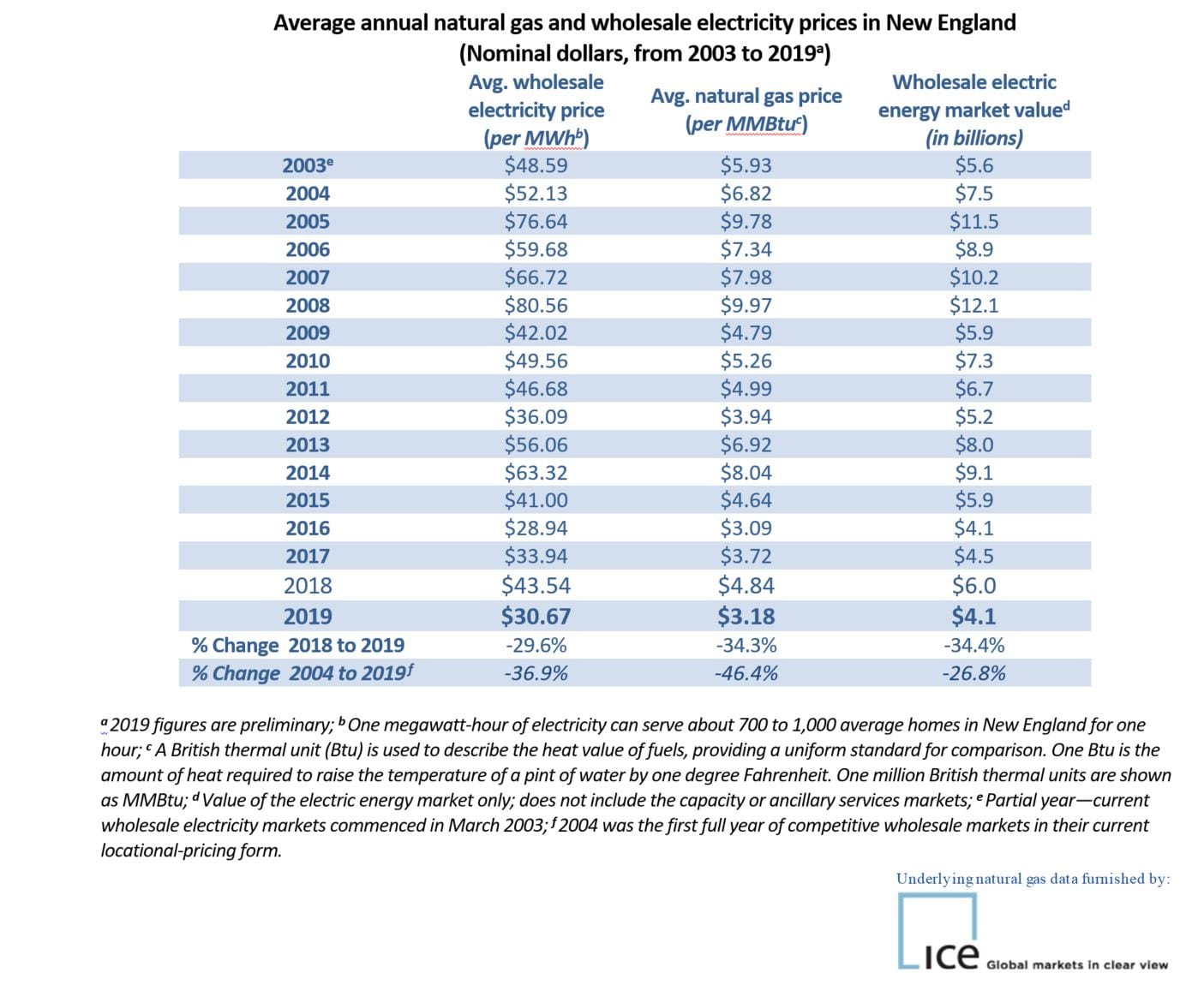New England’s wholesale energy market reaches historic low in 2019
 Total value of region’s wholesale electricity market was lowest since the start of competitive markets
Total value of region’s wholesale electricity market was lowest since the start of competitive markets
Historically low demand for grid electricity last year, combined with near-record-low wholesale electricity prices, led to New England’s lowest wholesale electric energy market value since the current market structure was implemented in 2003.
The preliminary total market value in energy transactions was $4.10 billion in 2019, slightly less than former record low of $4.13 billion in 2016. In 2018, the energy market value was $6.04 billion, while the highest ever was $12.1 billion in 2008.
Consumer demand for grid electricity in New England was approximately 119,159 gigawatt-hours (GWh), down from approximately 123,472 GWh in 2018 and the lowest since at least 2000. Mild weather, with no major heat or cold events hitting the region, played a role.
The region’s energy efficiency measures and behind-the-meter (BTM) solar installations also played a role. Energy efficiency directly reduces electricity use. BTM solar, on the other hand, sees consumers continue to use electricity, but they get that power from solar panels, rather than the bulk power system. In 2019, BTM solar installations produced an estimated 2,456 GWh of electricity.
The preliminary average real-time price for wholesale power in New England last year was $30.67 per megawatt-hour (MWh), a 30% decrease from 2018 and the second-lowest average price since 2003. The lowest price was in 2016, when prices averaged $28.94.
Another major driver in last year’s lower prices was a decrease in the cost of natural gas used to produce electricity. The average price of natural gas in 2019 in New England was $3.18 per million British thermal units (MMBtu), a 34% decrease over the 2018 price, and the second lowest since 2003. At 48.5%, natural gas-fired plants generated the most electricity of any fuel type in New England, or approximately 40% of the region’s total energy when including power imports from neighboring regions.
2019 New England price and demand highlights, based on preliminary data (see table below):
- Hourly consumer demand for grid electricity averaged roughly 13,600 MWh in 2019, the lowest since the current market structure was implemented.
- Five of the 11 months with the lowest average real-time energy prices were in 2019:
- October – $20.37 (third lowest)
- September – $20.45 (fourth lowest)
- June – $22.43 (eighth lowest)
- May – $22.89 (10th lowest)
- August – $23.58 (11th lowest)
- Net commitment-period compensation (NCPC) payments, given to resources that respond to ISO dispatch instructions but do not fully recover their start-up and operating costs in the energy market, were $30.6 million in 2019, the lowest since 2003. NCPC accounted for 0.7% of the total energy market value, also a record low.
Wholesale electricity prices rise and fall in real time based primarily on fuel prices (which are generally the biggest cost for power plants), demand for power, and transmission system conditions. The retail default service rates paid by consumers are generally set for longer intervals by state utility regulators and include other charges in addition to the cost of wholesale power. The time lag between wholesale price changes and their effect on retail rates varies depending on each state’s approach to procurement.

- Categories
- Industry News & Developments
- Tags
- annual prices



